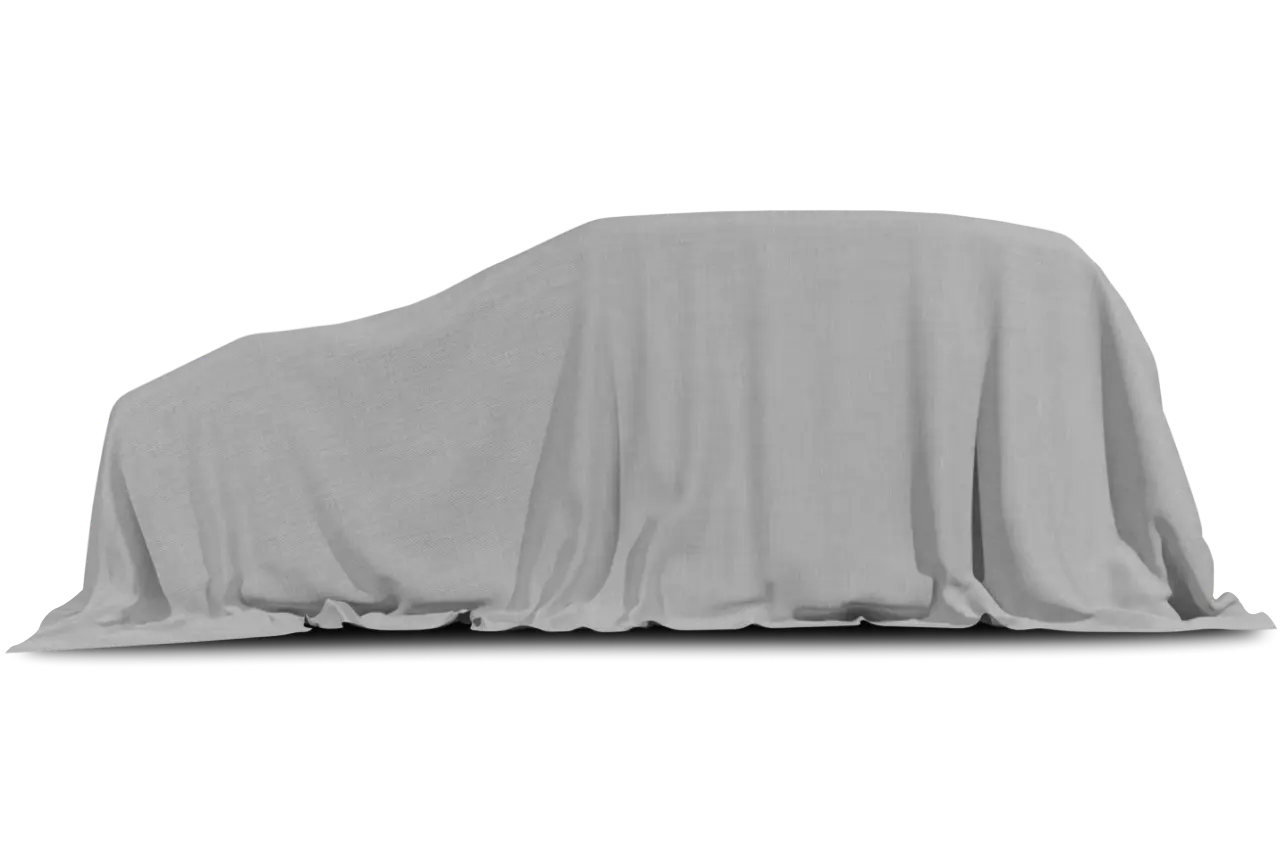
The 2013 Lexus ES trades some substance for gimmicks with its all-new design, but it should draw interest for adventurous styling and a first-ever ES hybrid version.
Characterizing an ES has always been like trying to distinguish the flavors in oatmeal — a porcelain bowl of it from room service at the Hyatt, but oatmeal nonetheless. Lexus’ best-selling sedan boasts incremental handling improvements and refined ride quality in its sixth-generation redesign, but the interior is a mixed bag, and so is my verdict.
Available as a V-6 ES 350 or first-ever hybrid ES 300h, the ES grew longer and taller for 2013. It now hails from the Toyota Avalon’s longer platform rather than the Camry, with which it traditionally shared underpinnings. At a media preview, I drove both ES drivetrains alongside the prior generation.
The Sharpest-Looking ES Yet
The front-wheel-drive ES adopts Lexus’ “spindle” grille — more of a fat hourglass — up front, drawing similarities to the recently reinvented rear-drive GS sedan. It’s actually a touch longer than that pricier sibling, and its creased lines stand out like no ES before. There is no ground-hugging F-Sport Package, as Lexus offers on a few other cars, but the ES needs none: It looks dynamic enough. Seventeen-inch alloy wheels are standard, with 18s optional on the ES 350.
How It Moves
The ES 350’s 3.5-liter V-6 moves out with a muscular exhaust note if standing on the gas. A Lexus spokesperson told me it’s a few ticks slower than the last ES — a tradeoff for better gas mileage — but crank the Lexus’ Drive Mode Select to Sport mode, as opposed to Eco or Normal, and sharper accelerator progression renders an even quicker climb. Alas, the six-speed automatic transmission still suffers befuddling inconsistencies: Sometimes it kicks down a gear or two for immediate passing power; other times it hunts aimlessly for the right gear.
Sport mode reduces power-steering assist for palpably better steering feedback. The prior ES had a tendency for the wheel to snap suddenly back to center. Its successor steers more naturally, with quicker reflexes. A redesigned suspension with uprated shocks and additional bracing also has been added, but does little to quell the car’s modest body roll.
Ride quality — a trademark of the previous car — remains sound. All ES models share the same suspension tuning. An adaptive suspension, which Lexus offered in two prior generations of the ES, is currently unavailable.
The ES remains front-wheel drive only with no all-wheel-drive option unlike competition from Acura, Infiniti, BMW, Audi, Cadillac and Mercedes. The Lexus GS does offer the option.
The hybrid ES 300h pairs a 2.5-liter four-cylinder with two motor-generators and a continuously variable automatic transmission for 200 combined horsepower versus the ES 350’s 268 hp. At full bore, the car hustles well enough, but it lacks the passing confidence deserving of a luxury badge, and the droning, here-it-comes CVT sounds anything but refined.
Like any full hybrid, the 300h can run on electric power at low speeds for short distances; an EV mode, activated via Drive Mode Select, raises the threshold where the car transitions to engine power. Drive Mode Select blocks EV mode if the car’s nickel-metal-hydride battery power is too low or if you press the gas for too much power. Stand on the pedal, even in EV mode, and the ES 300h springs to full power in moments.
Thanks to lower curb weight and better aerodynamics, EPA mileage in the ES 350 is up to 21/31 mpg city/highway, an overall improvement of about 2 mpg over the last ES. That’s near the head of the luxury competition, edging out the Acura TL, Audi A4 and Infiniti G37 by 1 mpg or more. The BMW 328i and four-cylinder Lincoln MKZ eke out another 1 to 2 mpg, however. One plus: The ES runs fine on regular gasoline; several competitors recommend or require premium.
No rating for the ES 300h has been given at this time, but Lexus says it expects the combined rating to be 39 mpg. That would make it the most efficient luxury sedan on the market, though the EPA has yet to give estimates for the redesigned Lincoln MKZ Hybrid.
Roomy Cabin
The front seats have stiffer side bolsters, which became apparent alongside the prior ES. Where the prior car’s front seats allowed too much sliding, these hold you in — without constraining on long-haul drives. Although it moved to the larger Avalon’s platform, the ES’ cabin room falls closer to that of the redesigned Camry: Total volume is 100.1 cubic feet, up 5.2 cubic feet from the last ES, which falls in line with a moonroof-equipped Camry. The biggest change comes in the backseat, which gains 4.1 inches of legroom and 0.7-inch headroom. It’s roomy back there, with decent knee room and no center floor hump. Manual sunshades in the doors and a power rear shade are optional, but the rear shade requires hollering to the driver, as the deployment controls are up front only. Heated rear seats and a rear climate zone — both available in the Avalon — are unavailable.
Trunk volume in the ES 350 is 15.2 cubic feet, up 0.5 cubic feet versus the last ES. That’s between the improved BMW 3 Series’ 17 cubic feet and the Acura TL’s surprisingly small 13.1 cubic feet. Typical of a hybrid, the ES 300h places its battery behind the rear seats, which lowers trunk volume to 12.1 cubic feet. Like the prior generation, the ES 350 gets a center pass-through but no folding backseat; the ES 300h has no opening at all. A power-closing trunk is optional.
Stop With the Gimmicks
Luxury touches include piano-black or genuine wood trim, with real bamboo in the ES 300h, and optional ambient lighting below the door and dashboard inlays. Lexus’ NuLuxe faux-leather upholstery, offered in cars like the CT 200h, is standard. Last year’s ES had standard leather. The NuLuxe feels synthetic, but it’s softer than the often-stiff leatherette, aka vinyl, competitors serve up.
Heated and ventilated seats are optional, but the ventilation borders on useless. That’s ironic since the Avalon has cooled seats that turned your chaps to ice. Similarly, the optional heated wood-and-leather steering wheel heats just the portions at 3 and 9 o’clock. Touch anywhere else and the wheel stays cold. I’m calling foul: If Chrysler can heat the wood portion of the 300’s wheel, Lexus should, too.
The gimmicks continue with an optional panoramic moonroof. It’s more like two small roofs separated by a massive divider, with clunky manual sunshades that short drivers won’t like yanking. Others — the Hyundai Azera and Cadillac CTS — have near-continuous panoramic panels that let more light, with power sunshades to boot.
The cabin trades last year’s chrome inlays for silver plastic, and the faux-leather dashboard trim is little more than a stitched veneer, which Lexus calls a stitched slush mold. Other entry-luxury cars, including Lexus’ own CT 200h, have more-convincing dashboard stitching, and Chrysler’s sedan can come wrapped in genuine leather. Similar stitching to the ES adds a classy vibe to the plebeian Camry, but in the pricier Lexus, it rings cheap.
The standard stereo includes USB/iPod compatibility, a six-CD changer — this is the brand that kept a tape deck long into the iTunes era — and Bluetooth phone operation. Options include a 7-inch display that works through a center-console knob or an 8-inch navigation system that works through Lexus’ second-generation Remote Touch Interface. Both systems add HD radio and Bluetooth audio streaming, which ought to be standard — and the six-CD changer dumped.
Remote Touch plays out like a computer mouse, with haptic feedback to fast-track your pointer to the on-screen options, which include a suite of smartphone-tethered applications such as Yelp, Pandora and Facebook Places via Lexus’ Enform system. While the ES lacks the stunning expanse of the GS’ 12.3-inch system, it’s intuitive enough to work when the car is stopped. Still, I find well-sorted knob systems — like Mercedes’ Comand — easier to manage on the road. Mark Levinson audio is optional in navigation-equipped cars.
Safety & Features
The ES has not been crash-tested, but Toyota engineers said they expect Top Safety Pick status from the Insurance Institute for Highway Safety and a harder-to-get five stars out of five overall from the National Highway Traffic Safety Administration. Standard features include head-protecting side airbags and brake-pedal override, plus the required antilock brakes and electronic stability system. New safety options include a blind spot warning system, rear cross-traffic alert and automatic high-beam headlights. Lane departure warning — but not mitigation — is also optional. Per forthcoming federal requirements, the ES 300h has an audible warning to alert nearby pedestrians when the car is in EV mode below 12 mph.
Standard features on the ES 350 include keyless access with push-button start, dual-zone automatic climate control, a moonroof, power front seats, a USB/iPod-comparable CD stereo, Bluetooth phone operation and faux leather upholstery. Real leather, heated and ventilated seats, front and rear parking sensors, a navigation system and a panoramic moonroof are among the options.
Lexus ES in the Market
As of this writing, Toyota’s luxury division has yet to price the ES, which hits dealerships later this year. But the prior-generation sedan ranged from the mid-$30,000s to the mid-$40,000s as options ballooned. No competing luxury sedan has the ES beat across the board, but others chip away at its various weaknesses.
The ES is no tarted-up Toyota; the quality gains versus a loaded Camry are apparent, and its strengths are clear. This is the sharpest-looking ES in at least three generations, and the hybrid’s 39-mpg EPA combined rating should all but guarantee more interest. But too many surprise-and-delight features fall flat. Lexus needs to take a page from Audi: Ax the ventilated seats and faux-leather dashboards and invest in consistent quality instead.
| Send Kelsey an email |


































